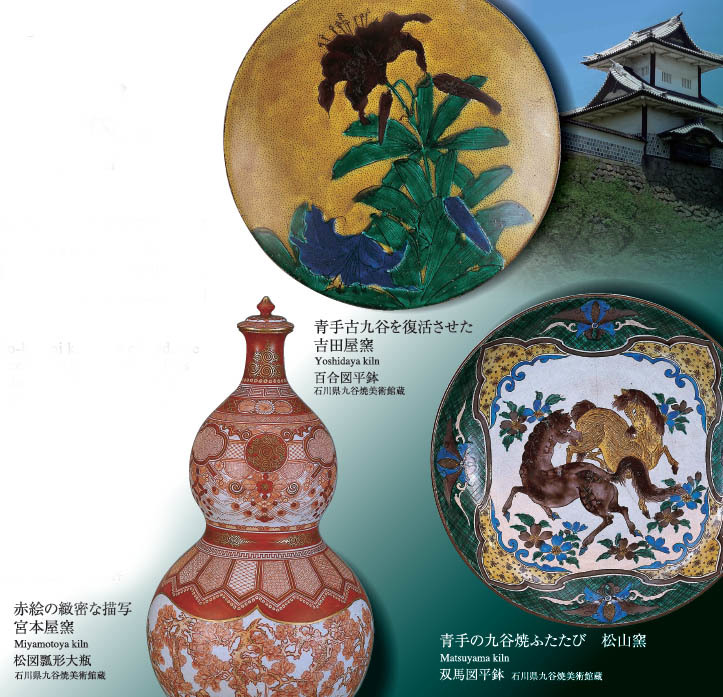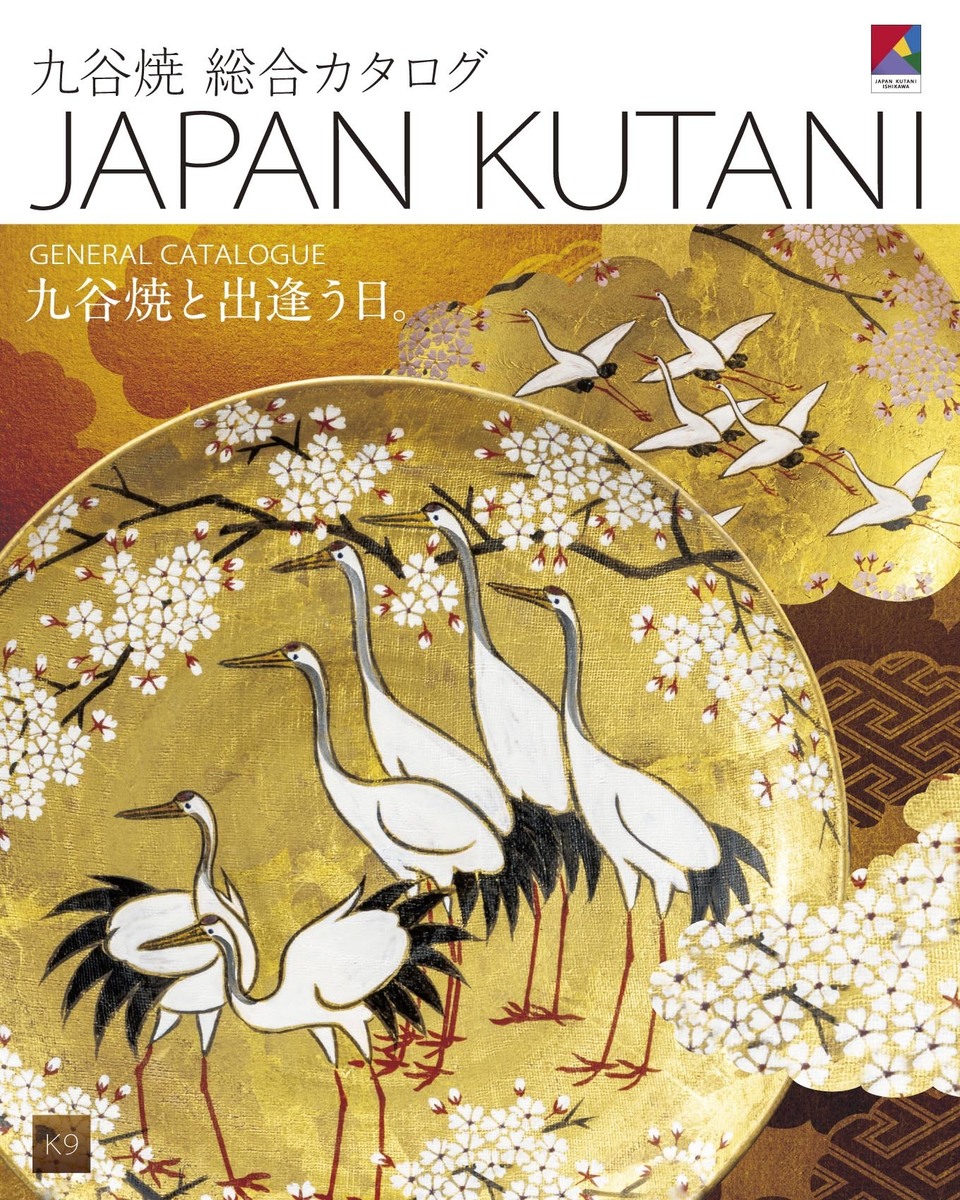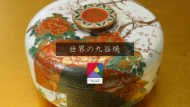The 19th century
Restoration and Development
About 100 years after the Ko-kutani kiln was closed, the Kaga clan started to produce ceramics in Kanazawa. This marked the beginning of the period of revival of Kutani-ware. Many kilns were established, each with its own original style. Some examples are the Mokubei style at the Kasugayama kiln, the revival of the Ko-kutani style at the Yoshidaya kiln, fine decoration in red (Iidaya kiln) at the Miyamotoya kiln, and gold decoration at the Eiraku kiln (Kutani-hon kiln).
Traditional Decorating Styles
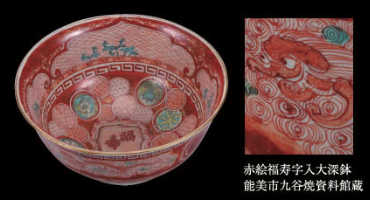
IIDAYA 1831〜
The subjects of the decorations are mainly Chinese people. This style creates an elegant atmosphere with its fine red lines and red and gold motifs.
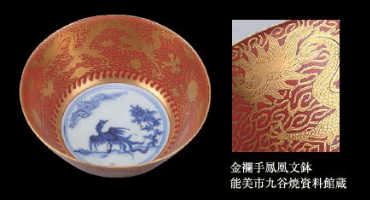
EIRAKU 1865〜
Gold designs are painted onto a red background (Kinrande style). These pieces feature a gorgeous and refined beauty.
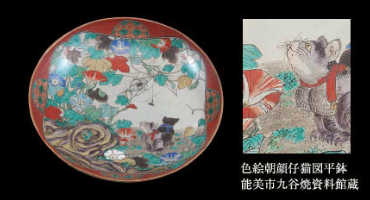
SYOZA 1841〜
The Akae (red decoration), Ko-kutani, and Yoshidaya styles are integrated into this style, which features colorful decoration. After the Meiji period, it was mostly these works that were.



